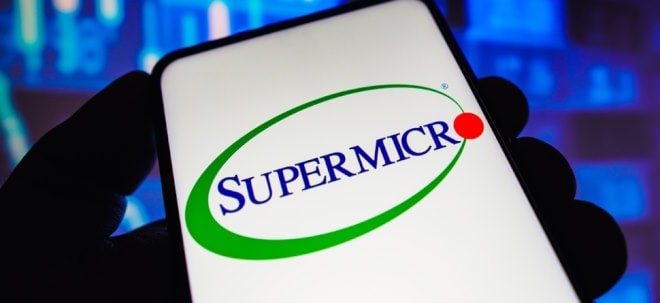HVAC Market to Grow by USD 90.5 Billion from 2025-2029, Driven by Expansion in Construction Sector, Report with Market Evolution Powered by AI - Technavio
NEW YORK, Feb. 4, 2025 /PRNewswire/ -- Report on how AI is driving market transformation - The global HVAC market size is estimated to grow by USD 90.5 billion from 2025-2029, according to Technavio. The market is estimated to grow at a CAGR of almost 7% during the forecast period. Growing construction sector is driving market growth, with a trend towards rise in incorporation of building automation systems. However, failure issues with hvac equipment poses a challenge. Key market players include ABM Industries Inc., Air Comfort, Alexander Mechanical Inc., Blue Star Ltd., Carrier Global Corp., Daikin Industries Ltd., EMCOR Group Inc., Emerson Electric Co., ENGIE SA, Ferguson plc, Fujitsu Ltd., Ingersoll Rand Inc., J and J Air Conditioning, Johnson Controls International Plc, Lennox International Inc., LG Corp., Nortek, Samsung Electronics Co. Ltd., Service Logic, and Siemens AG.
Key insights into market evolution with AI-powered analysis. Explore trends, segmentation, and growth drivers- View Free Sample PDF
HVAC Market Scope | |
Report Coverage | Details |
Base year | 2024 |
Historic period | 2019 - 2023 |
Forecast period | 2025-2029 |
Growth momentum & CAGR | Accelerate at a CAGR of 7% |
Market growth 2025-2029 | USD 90.5 billion |
Market structure | Fragmented |
YoY growth 2022-2023 (%) | 6.4 |
Regional analysis | APAC, Europe, North America, Middle East and Africa, and South America |
Performing market contribution | APAC at 56% |
Key countries | China, US, Japan, Germany, UK, France, India, Spain, South Korea, and Italy |
Key companies profiled | ABM Industries Inc., Air Comfort, Alexander Mechanical Inc., Blue Star Ltd., Carrier Global Corp., Daikin Industries Ltd., EMCOR Group Inc., Emerson Electric Co., ENGIE SA, Ferguson plc, Fujitsu Ltd., Ingersoll Rand Inc., J and J Air Conditioning, Johnson Controls International Plc, Lennox International Inc., LG Corp., Nortek, Samsung Electronics Co. Ltd., Service Logic, and Siemens AG |
Market Driver
The HVAC system industry is thriving, with growing demand in residential, commercial, and industrial buildings. Heating and cooling systems are essential for thermal comfort, especially with climatic changes. Climate control technologies are key, including energy-saving products like programmable thermostats, Internet of Things, and smart HVAC systems. Energy consumption is a concern, driven by population growth, industrialization, and construction sector expansion. Indoor air quality is crucial, leading to the popularity of air filters, HEPA filters, and air purifiers. Green buildings, energy efficiency requirements, and LEED certification are trends. HVAC regulations, such as SEER2 and R-410 refrigerant, are shaping the market. Heat pumps, VRF systems, and heat pump equipment are popular solutions. Affordable housing units and commercial infrastructure require energy-efficient HVAC systems. Sustainable practices, building codes, and modern building solutions are driving the market. Cooling segment growth includes ductless mini-split systems and net-zero buildings. New constructions and retrofits are opportunities. The real estate market values energy-efficient systems and sustainable HVAC solutions. ChatGPT model predicts continued growth, with trends like AI-based automated solutions, condensing boilers, and ductless HVAC systems. The market is moving towards energy-saving, sustainable practices, and meeting regulatory requirements. Furnace systems, boiler systems, and AC systems are also in demand. Air conditioning and heating segments continue to innovate with energy-efficient solutions.
Building Automation Systems (BAS) have become essential components in managing and optimizing HVAC systems and other building facilities. These systems utilize computing and digital communication tools to enhance energy efficiency. The number of BAS installations has risen due to an increase in construction projects and building retrofits. Advancements in sensor technology, affordable communication systems, and user-friendly interfaces have improved BAS features. Manufacturers are adopting open protocols, such as the Internet protocol, to offer advanced control solutions. BAS technology now facilitates seamless interaction and operation among HVAC, lighting, fire, and security control units in a building.
Request Sample of our comprehensive report now to stay ahead in the AI-driven market evolution!
Market Challenges
- The HVAC system industry faces several challenges in residential, commercial, and industrial buildings. Heating and cooling demands continue to rise due to climatic changes and population growth, leading to increased energy consumption. In the residential segment, affordability and indoor air quality are key concerns. Energy efficiency, programmable thermostats, and smart HVAC systems are popular solutions. In commercial buildings, energy savings, infrastructure needs, and thermal comfort are priorities. Industrial buildings require and sustainable HVAC systems, including VRF systems, heat pumps, and air filters. Climate control technologies, including HEPA filters and air purifiers, are essential for maintaining healthy indoor environments. Energy efficiency requirements, such as SEER2 regulation and R-410 refrigerant, are driving innovation in HVAC systems. The construction sector is embracing modern practices, including net-zero buildings, smart building solutions, and LEED certification. The real estate market demands energy-efficient HVAC systems and sustainable practices to reduce environmental impact. ChatGPT model predicts continued growth in the HVAC market, driven by AI-based automated solutions, energy-saving products, and HVAC regulations.
- HVAC systems, comprised of heating and cooling components for residential and commercial applications, have seen advancements with software-based and electrical integrations. However, these enhancements increase the potential for component failure, impacting system efficiency and longevity. Common issues include worn-out and dirty filters, which strain the HVAC unit, reducing its lifespan and raising energy expenses. Regular maintenance is essential to address these concerns and ensure optimal system performance.
Discover how AI is revolutionizing market trends- Get your access now!
Segment Overview
This hvac market report extensively covers market segmentation by
- Type
- HVAC Equipment
- HVAC Services
- End-user
- Non-residential
- Residential
- Geography
- APAC
- Europe
- North America
- Middle East And Africa
- South America
- Heating Equipment
- Heat Pumps
- Furnaces
- Unitary Heaters
- Boilers
- Ventilation Equipment
- Air Handling Units
- Air Filters
- Dehumidifiers
- Ventilation Fans
- Humidifiers
- Air Purifiers
- Cooling Equipment
- Unitary Air Conditioners
- VRF Systems
- Chillers
- Room Air Conditioners
- Coolers
- Cooling Towers
1.1 HVAC equipment- The global HVAC market is experiencing significant growth due to various factors, including population growth, industrialization, and increasing sales of commercial and residential buildings. The HVAC market can be segmented into three sub-segments: air conditioning, heating, and ventilation. In the air conditioning segment, split, chillers, airside, packaged, VRF, window, and portable ACs are in high demand. HVAC manufacturers are focusing on developing cost-effective and energy-efficient equipment that meets regulatory requirements. The heating segment includes heating equipment such as underfloor heating systems, radiators, boilers, and water heating systems. In the ventilation segment, fans, heat recovery ventilation (HRV) units, and air handling units (AHUs) are popular. The rise in construction activities and the need for maintaining indoor air quality are driving the demand for ventilation equipment. New trends, such as the use of energy recovery ventilation (ERV) units, are contributing to market growth. In the air conditioning segment, energy efficiency and the shift towards inverter ACs are key trends. In the heating segment, the focus is on energy savings and the use of renewable energy sources. In the ventilation segment, innovations in technology and the growing awareness of indoor air quality are driving growth. The HVAC market is expected to continue growing due to these trends and the increasing demand for comfortable and energy-efficient indoor environments.
Download a Sample of our comprehensive report today to discover how AI-driven innovations are reshaping competitive dynamics
Research Analysis
The HVAC system industry encompasses the design, manufacturing, installation, and maintenance of heating, ventilation, and air conditioning systems for various types of buildings, including residential, commercial, and industrial. Climate control technologies have become increasingly important due to climatic changes and the need for energy efficiency. In the residential sector, HVAC systems are essential for comfort and energy savings. In commercial and industrial buildings, HVAC systems are crucial for productivity and energy management. Energy consumption is a significant concern, leading to the development of energy-saving products such as SEER2 regulation compliant AC units, A2L refrigerant, and R-410 refrigerant. The construction sector is also adopting smart building solutions, net-zero buildings, condensing boilers, ductless HVAC systems, sustainable HVAC systems, and smart HVAC systems to reduce energy consumption and carbon footprint. Furnace and boiler systems continue to evolve with advanced technologies to improve efficiency and performance.
Market Research Overview
The HVAC system industry encompasses the design, manufacturing, installation, and maintenance of heating, ventilation, and air conditioning systems for residential, commercial, and industrial buildings. Climate control technologies are increasingly important due to climatic changes and energy consumption concerns. The construction sector, population growth, and industrialization are driving the demand for new housing units and commercial infrastructure. Indoor air quality, energy efficiency, and thermal comfort are key considerations. Programmable thermostats, Internet of Things, and smart HVAC systems are becoming standard. VRF systems, heat pumps, air filters, and HEPA filters are popular energy-saving products. Green buildings and energy efficiency requirements are shaping the market. SEER2 regulation, R-410 refrigerant, and A2L refrigerant are influencing HVAC regulations. AI-based automated solutions, LEED certification, and net-zero buildings are sustainable practices. Cooling segment includes AC, ductless mini-split systems, and new constructions. Retrofit segment focuses on energy-efficient solutions for existing buildings. The real estate market and modern building practices are also significant factors. Affordable housing units, commercial HVAC systems, and energy-efficient HVAC systems are in high demand. The environmental impact of HVAC systems is a growing concern, with a focus on sustainable practices and building codes. Modern HVAC systems include condensing boilers, ductless HVAC systems, sustainable HVAC systems, furnace systems, boiler systems, and chatGPT model-based solutions. Air purifiers are also gaining popularity for improving indoor air quality.
Table of Contents:
1 Executive Summary
2 Market Landscape
3 Market Sizing
4 Historic Market Size
5 Five Forces Analysis
6 Market Segmentation
- Type
- HVAC Equipment
- HVAC Services
- End-user
- Non-residential
- Residential
- Geography
- APAC
- Europe
- North America
- Middle East And Africa
- South America
- Heating Equipment
- Heat Pumps
- Furnaces
- Unitary Heaters
- Boilers
- Ventilation Equipment
- Air Handling Units
- Air Filters
- Dehumidifiers
- Ventilation Fans
- Humidifiers
- Air Purifiers
- Cooling Equipment
- Unitary Air Conditioners
- VRF Systems
- Chillers
- Room Air Conditioners
- Coolers
- Cooling Towers
7 Customer Landscape
8 Geographic Landscape
9 Drivers, Challenges, and Trends
10 Company Landscape
11 Company Analysis
12 Appendix
About Technavio
Technavio is a leading global technology research and advisory company. Their research and analysis focuses on emerging market trends and provides actionable insights to help businesses identify market opportunities and develop effective strategies to optimize their market positions.
With over 500 specialized analysts, Technavio's report library consists of more than 17,000 reports and counting, covering 800 technologies, spanning across 50 countries. Their client base consists of enterprises of all sizes, including more than 100 Fortune 500 companies. This growing client base relies on Technavio's comprehensive coverage, extensive research, and actionable market insights to identify opportunities in existing and potential markets and assess their competitive positions within changing market scenarios.
Contacts
Technavio Research
Jesse Maida
Media & Marketing Executive
US: +1 844 364 1100
UK: +44 203 893 3200
Email: media@technavio.com
Website: www.technavio.com/
![]() View original content to download multimedia:https://www.prnewswire.com/news-releases/hvac-market-to-grow-by-usd-90-5-billion-from-2025-2029--driven-by-expansion-in-construction-sector-report-with-market-evolution-powered-by-ai---technavio-302366941.html
View original content to download multimedia:https://www.prnewswire.com/news-releases/hvac-market-to-grow-by-usd-90-5-billion-from-2025-2029--driven-by-expansion-in-construction-sector-report-with-market-evolution-powered-by-ai---technavio-302366941.html
SOURCE Technavio



